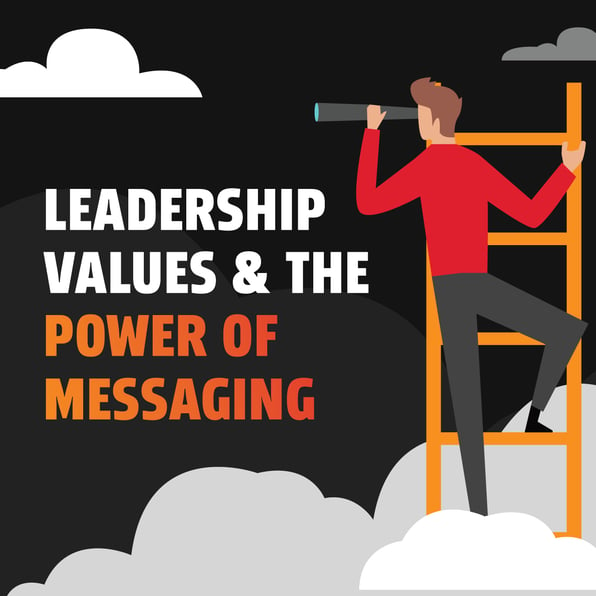I know it, and you know it — HubSpot is definitely the superior CRM product on the market. With a wide array of fantastic features and a proven track record of helping companies better manage their customers and demonstrate impressive growth, it’s clear why you’ve chosen to invest in HubSpot for your small business.
There’s one problem, though — your sales team isn’t totally on board. If you’ve used Salesforce up until now, your sales team may not be too enthusiastic about the switch.
So how can you bring your team on board? How can you get your salespeople excited about using HubSpot? We’re glad you asked.
The problem often boils down to this: Sales managers simply don’t understand how HubSpot can benefit them. If they’re worked with Salesforce or another CRM for a long period of time, it might be difficult to convince them to switch to HubSpot.
The good news is that with the right tools and training, you can get your sales team fired up and ready to integrate HubSpot into their workflow. Here are our top five tips to help you get your sales team happy about HubSpot:
#1: Analyze Your Sales Process
What better way to engage your team of enthusiastic salespeople than by actively analyzing the sales process? By taking a hard look at your team’s established workflow, you can pinpoint areas where HubSpot can be particularly helpful and get your team excited.
Do your salespeople enjoy connecting with clients but hate making cold calls? Make sure to emphasize HubSpot’s ability to help them create and build relationships while also attracting new business. Do your sales team members find themselves frustrated with constantly having to switch between interfaces to access needed information? Show them HubSpot’s many integration features to demonstrate why it’s the perfect product for your unique business needs.
Every sales team works differently, but every team can benefit from HubSpot. By analyzing your company’s sales practices and demonstrating how HubSpot can help your team without totally disrupting their workflow, you’ll get your salespeople on board.
#2: Invest in HubSpot Training
The simplest way to help someone feel comfortable with a new business tool is to invest in training. And HubSpot makes it easy with their free Academy. With plenty of certifications and video product lessons, it’s easier than ever to help your team become acquainted with their new favorite business interface.
To begin, have your sales team check out this article: “Inbound Sales: How to Sell the Way Prospects Buy.” This article — published directly on HubSpot’s website, explains exactly why approaching sales from the perspective of customer relations management is highly beneficial to your company. No longer will your salespeople feel compelled to make cold calls and force your products or services on clients who may or may not be interested. Instead, you’ll be able to build much more mutually beneficial relationships with your customers — that’s just good for everybody.
After that, feel free to explore the other incredible training HubSpot has to offer. Your team can earn certifications such as these through the HubSpot Academy:
And if your team is interested in additional free video lessons, tell them to check out these:
- Introduction to Sales Hub Professional tools for Sales Reps
- Using HubSpot Video For Your Sales Emails in HubSpot
- Closing Sales in HubSpot.
These easy-to-access lessons are sure to help your team understand how HubSpot can benefit your company. And by engaging your team with helpful training, you can increase their confidence and help them feel excited about using a new CRM.
Need help with HubSpot training? Let’s discuss your needs.
#3: Create a Transition Plan

It is crucial to have a clear roadmap for your migration so create a detailed plan with realistic deadlines once the data has been cleaned up, the properties have been created, and the tools/services have been integrated. Keep in mind that these are two platforms that could use different names for the same tool or function. Consider creating a document or list containing the Hubspot equivalents of the most commonly used Salesforce features and properties.
#4: Adapt HubSpot to Meet Your Needs — Not the Other Way Around
That leads us to tip #3 — make sure you show your sales team that they can adapt HubSpot to meet their needs — not the other way around.
It’s happened to many of us — we get used to doing things a certain way, and then management comes in and decides to shake things up. Suddenly we have to learn a whole new workflow, and that’s a daunting task. It’s easy to understand why sales teams may be resistant to the idea of adapting to a new CRM.
But the incredible thing about HubSpot is that you don’t have to adapt to it — you can make it fit your existing workflows. Remember — HubSpot already has built-in integration capability for WordPress, QuickBooks, and many other commonly used business applications. The advantage that HubSpot offers is a consolidated interface that allows for easy communication between such applications and allows you and your team to streamline your sales processes and better meet your customers’ needs.
For example, in addition to its four standard objects (contacts, companies, deals, and tickets), HubSpot allows you to create your own custom objects. Once you’ve built an object unique to the needs of your team, you can maintain records pertaining to that object end enroll those records into your workflows. It’s easier than ever to perfectly tailor a CRM to help you keep track of and use your important data.
Transitioning to HubSpot doesn’t have to be painful — and make sure your team knows that. HubSpot is easily adaptable, and your team will have the freedom to make it work for them.
#5: Clean Up Your Data
Before transitioning to HubSpot, make sure to clean up your data. Take some time to validate old emails, delete bounces and unsubscribes, and update any outdated client information. That way, your team can have a fresh start after making the switch.
Nobody enjoys spending time cleaning while it’s happening, but everybody enjoys the feeling of being clean — and your business is no different! Imagine how much more confident your sales agents will feel with a cleared-out and up-to-date database of client information. Having clean and easy-to-use data will help your team feel more confident than ever as you make the switch to HubSpot.
#6: Make a List of All the Tools and Services You’ll Need to Integrate

We can’t emphasize this enough — HubSpot has the ability to integrate with almost any business tool or interface your team is already using. So, before transitioning over, make sure to compile a list of all relevant integrations your team will need to make the shift as smooth as possible.
Do your sales agents prefer to use Outlook or Gmail for their email feature? Make sure to let your team know that they can integrate either one into HubSpot. Do you need to sync data between HubSpot and QuickBooks so your salespeople can easily access financial information? Easy peasy! HubSpot offers full integration that will minimize disruption to your workflow and increase overall productivity and profitability.
HubSpot has a handy tech stack audit guide here.
Get Your Team Ready — HubSpot is About to Change Things for the Better!
At the end of the day, it’s down to you to convince your sales team that transitioning to HubSpot is for everyone’s benefit. But with all the tools, integrations, and opportunities HubSpot has to offer, it won’t be too difficult to get your team fired up.
HubSpot represents the most top-notch CRM technology out there — and we’re excited you’ve chosen to invest in it.
For more information, tips, or strategies as you adjust to using HubSpot for your business, make sure to reach out to us. Visit our contact page to learn more about how we can help you master HubSpot — your new streamlined workflow is just a few clicks away.




